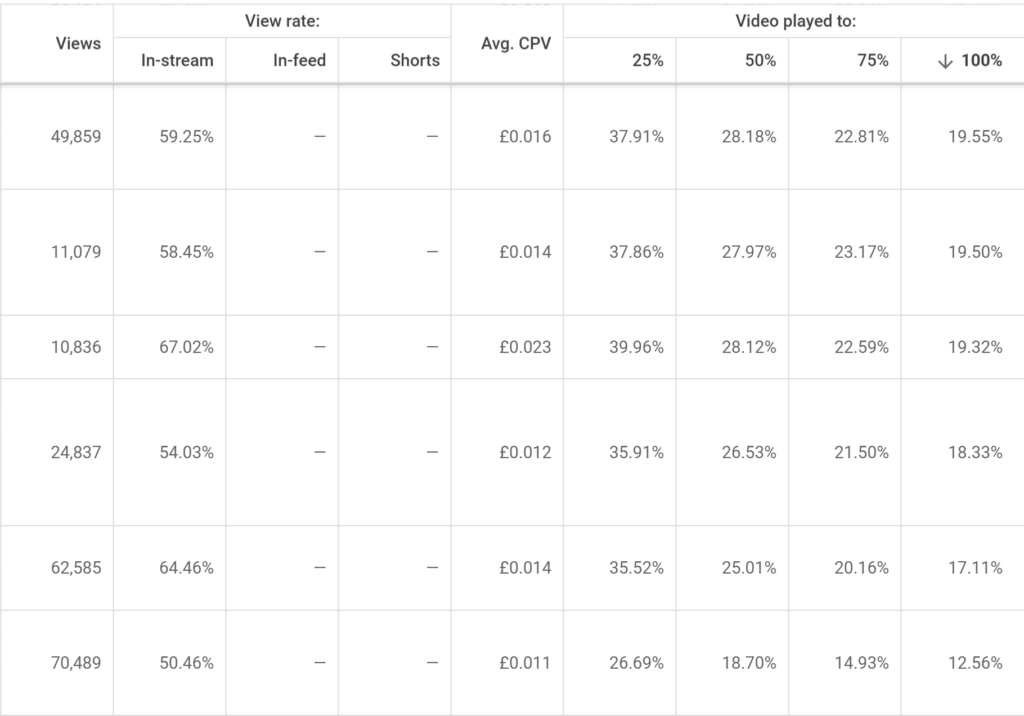Discover what makes YouTube marketing a crucial aspect of contemporary digital marketing strategies.
As of April 2024, YouTube is the second most visited website in the world. Not only has the once simple video-sharing website evolved into a source of employment for content creators, and a dominating source of entertainment for viewers – the platform also successfully lends itself to the world of digital marketing.
A myriad of marketing strategies, such as search engine optimisation (SEO) and brand presence, are highly likely to thrive on YouTube. Not only does the platform have worldwide reach, it also has an astronomical number of active users – 2.7 billion as of 2024. So, it’s easy to see why the prospect of YouTube marketing seems as inviting as it sounds. Read on for an in-depth guide on how to create, promote and optimise your company’s YouTube marketing campaigns.
What is YouTube Marketing?
As a general rule, it is important to understand the platforms you want to expand your marketing strategies into. So, let’s take a look at how YouTube marketing works.
YouTube marketing involves a video marketing strategy, which uses professional and engaging video content that is relevant to the desired target audience, in order to promote a business and their products/services.
A significant sub-category of YouTube marketing is YouTube Ads. When you have monetisation enabled for your channel, advertisements will be shared through ad auction, Google Ads Manager and other YouTube-sold sources. You can choose to share in revenue from ads being served on the watch page, or in the Shorts Feed. However, keep in mind that once monetisation has been turned on, it may take some time for ads to be shown.
To help keep things relevant, the ads shown on your videos are automatically chosen based on the context of the video topic, your video metadata and whether the video is advertiser-friendly.
To discover how ads are shown on videos that you monetise, click here.
How to Create YouTube Marketing Campaigns
Before we dive in, it’s important to note that maintaining a YouTube channel requires a lot of preparation and dedication. Your marketing strategies will need to allow time for planning, setting out video marketing goals, filming, editing, promoting, optimising and analysing your content on a regular basis. If your business has the capacity to dedicate itself to the lucrative realm of YouTube marketing, your audience is guaranteed to grow. So, let’s break down how creating a YouTube marketing campaign works.
To begin enjoying the advantages of YouTube marketing, you’ll need to set up a Google Business account, which will automatically grant you access to a YouTube account. Once this has been set up, you’ll need to create a YouTube Brand account – this allows you to manage editing permissions, streamline your brand’s online presence and customise your channel.
How to Tailor YouTube Marketing Content
YouTube offers many useful avenues to assist you with relevant audience targeting. For instance, there is the option to customise the way your channel appears to different types of users, e.g. those who are unsubscribed would see different featured content than those who are subscribed.
A good way to take advantage of this feature is to configure your settings so that new, unsubscribed users see a channel trailer – a general overview of your business/brand and the products/services you are promoting – and returning, subscribed users see a featured video, without all of the background information that they are already likely to know, to avoid showing repetitive content and increase customer retention.
For more information on how to manage your Brand Account, click here.
How to Customise Your YouTube Channel
Ensuring brand consistency across all marketing platforms is of the utmost importance. Not only will this help customers recognise you, but it will also build a solid foundation for present and future marketing strategies.
Customising your YouTube channel is one of the best ways to keep your branding consistent. Here is what we recommend:
- Add a channel profile picture and channel art
- Upload a channel trailer for unsubscribed users
- Upload a banner image and video watermark
- Add a channel description – include contact information, a link to your website and to your other social platforms
For more information on how to customise your channel, click here.
How to Promote YouTube Marketing Campaigns
While SEO greatly increases the search engine rankings for your videos, if YouTube isn’t a platform your business has an established audience on, it may be difficult at first to increase reach, impressions and engagement.
This is why promoting your channel and videos across all other platforms is very important in terms of increasing exposure, views, clicks, etc. Fortunately, it is easy to share the video content your brand creates across other platforms.
There are many avenues you can take to promote your YouTube channel – let’s dive in.
Social Media Marketing
Social media marketing is an easy, cost-effective way to spread the word about your channel and videos. Not only will this create additional insights for you to better analyse and target audiences, but it will also increase engagement, reach and impressions.
Simply click the “Share” tab underneath the video and select the channels you’d like to promote your content onto. YouTube even provides a shortened URL to your video for convenient posting.
It’s important to remember when promoting your channel and videos, to tailor the best marketing strategy to each individual social media platform. For instance, over-using hashtags doesn’t tend to resonate with Facebook, Twitter and LinkedIn audiences, but for Instagram – feel free to use plenty.
TikTok is one of the most popular social media platforms, a study conducted in 2020 discovered that 73% of users felt more connected to brands they discovered on TikTok than on other social media platforms.
For more information on how TikTok Advertising can benefit your business, click here.



